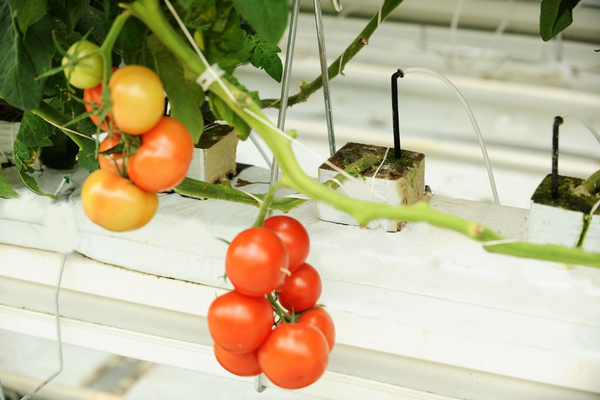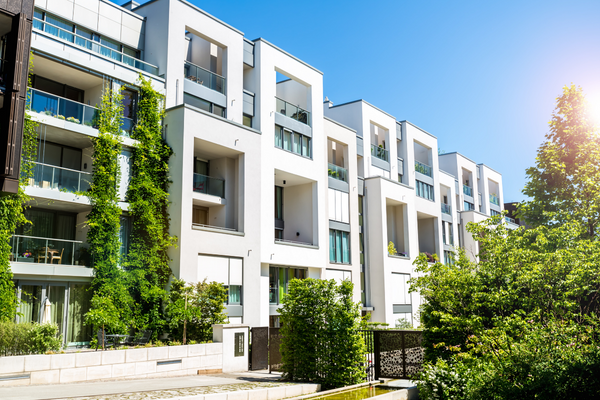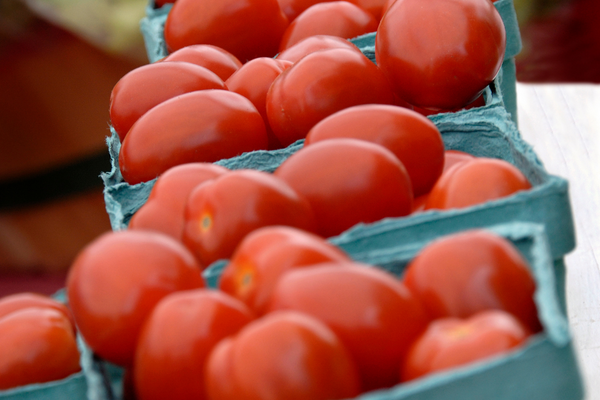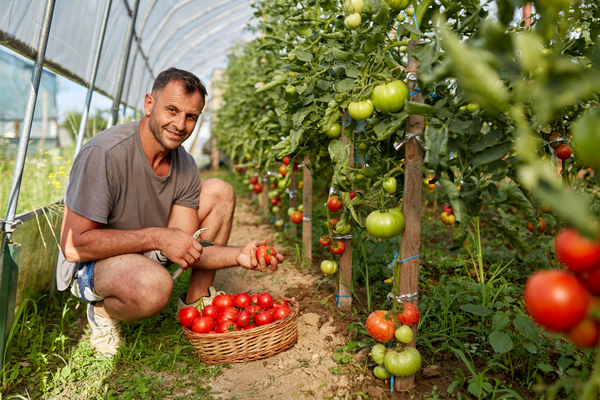Last Updated on March 22, 2023 by Lisa Vargas
In the current climate of unpredictability, it’s crucial to prioritize self-sufficiency and preparedness. One way to achieve this is by cultivating your own food through gardening. However, for those living in urban areas with limited space, traditional gardening may seem impossible.
Fortunately, hydroponics provides an effective solution. This soilless growing system allows you to cultivate plants in water infused with nutrients. This article focuses on growing tomatoes using hydroponics as it’s an effortless crop to cultivate and a staple in many diets.
Throughout this article, we’ll provide a comprehensive guide on how to grow tomatoes using hydroponics, including selecting appropriate tomato varieties, setting up the hydroponic system, and maintaining it.
With the information provided, you’ll be equipped with the knowledge to start your hydroponic tomato garden and take the first step towards self-sufficiency.
The Importance of Self-Sufficiency in Times of Chaos

In recent years, the world has experienced several crises, from natural disasters to pandemics, which have highlighted the importance of being self-sufficient. These events have disrupted supply chains, causing shortages of essential goods such as food and water.
In such situations, those who are self-sufficient and have the ability to produce their own food are better equipped to survive and thrive.
Self-sufficiency doesn’t just mean having enough food to eat; it also means having the skills and resources necessary to survive in challenging circumstances. For instance, in a power outage, having a generator or solar panels can provide you with electricity.
In a water shortage, having a rainwater harvesting system or some type of water storage system for when SHTF, can ensure that you have access to clean water.
Self-sufficiency provides a sense of security and peace of mind, knowing that you have the ability to provide for yourself and your loved ones in times of crisis. It’s a way to take control of your own destiny and not be at the mercy of external factors.
Gardening is an excellent way to achieve self-sufficiency, especially in urban areas. By growing your own food, you reduce your dependence on external sources, and you can ensure that you have access to fresh produce.
Hydroponics takes it a step further by enabling you to grow crops in a small space with minimal water usage. It’s an efficient and sustainable way to achieve self-sufficiency in an urban setting.
In the next section, we’ll delve deeper into the benefits of urban gardening and why hydroponics is an ideal option for those living in urban areas.
How Gardening Can Help Achieve Self-Sufficiency

Gardening is a fantastic way to achieve self-sufficiency and reduce your dependence on external sources. By growing your own food, you can ensure that you have access to fresh produce whenever you need it. This is especially important in urban areas where fresh produce may be hard to come by.
Gardening can also improve your mental and physical health. It’s a form of exercise that can help you stay active and healthy, and it can also reduce stress levels and improve mood. Additionally, gardening is a sustainable way of living that reduces your carbon footprint and contributes to a healthier environment.
In times of crisis, gardening can be a lifesaver. For instance, in a food shortage, having a vegetable garden can ensure that you have access to fresh produce, even when grocery stores are empty. Gardening can also be a source of income, as you can sell excess produce to your neighbors or at a local farmers’ market.
Hydroponics takes gardening to the next level by enabling you to grow crops in a small space and with less water than traditional gardening. This makes it an ideal option for those living in urban areas with limited space and resources.
In the next section, we’ll explore why hydroponics is a great option for urban gardening and how it can help you achieve self-sufficiency.
Benefits of Gardening in an Urban Setting

Living in an urban area can make it challenging to access fresh produce. Most grocery stores and markets have limited options, and the produce may not always be fresh. However, urban gardening can change that. By growing your own food, you can ensure that you have access to fresh, healthy produce whenever you need it. It’s like having a farmer’s market right in your own backyard!
But the benefits of gardening go beyond just access to fresh produce. It can also benefit both your mental and physical health. Gardening has been shown in studies to reduce stress and improve mental health, mood, and provide a sense of purpose. Plus, it’s a great way to get some exercise and fresh air without having to leave your home.
Furthermore, gardening is a sustainable way of life. You can reduce your carbon footprint and contribute to a healthier environment by growing your own food.It’s a small but significant step towards a more sustainable future, and it feels great knowing you’re doing your part.
Why Hydroponics is a Great Option for Urban Gardening
Hydroponics is a soilless growing system that allows you to grow crops in a small space, making it an ideal option for urban gardening. Plus, it’s just really cool to see plants growing without soil! Unlike traditional gardening, hydroponics uses less water and produces higher yields.
This is because the plants are given the exact amount of nutrients they need, and the water is recycled through the system. It’s like giving your plants a personalized spa treatment.
Another advantage of hydroponics is that it can be done indoors. This means that you can grow crops year-round, regardless of the weather or season. It’s an excellent option for those who don’t have access to outdoor space or live in areas with harsh climates. Plus, it’s always fun to have some greenery inside your home.
Choosing the Right Tomato Varieties for Hydroponics
When it comes to growing tomatoes using hydroponics, there are several varieties to choose from. Some of the best options include cherry tomatoes, beefsteak tomatoes, and heirloom tomatoes.
These varieties are well-suited for hydroponic growing conditions and can produce high yields. Disease-resistant varieties are also crucial to avoid common tomato diseases such as blight and wilt. Some disease-resistant varieties include Roma, Celebrity, and Mountain Fresh Plus.
Tomatoes are a great crop to grow using hydroponics, and there are many varieties that you can choose from. When selecting tomato varieties for hydroponics, it’s important to choose those that are well-suited to hydroponic growing conditions.
Some varieties that are recommended for hydroponics include cherry tomatoes, beefsteak tomatoes, and heirloom tomatoes. These varieties produce high yields and are well-suited to the nutrient-rich water used in hydroponic systems.
Disease-resistant varieties are also important, as they can help prevent common tomato diseases such as blight and wilt.
Growing tomatoes in hydroponics
Setting up a hydroponic system may seem daunting, but it’s actually quite simple. The first step is to choose a suitable location for your hydroponic system. This location should have access to electricity, water, and a drain. Growing tomatoes in hydroponics is a simple and effective way to produce a bountiful crop.
The first step in growing tomatoes using hydroponics is to plant the tomato seeds or seedlings. You’ll want to ensure that the seeds or seedlings are healthy and disease-free. From there, it’s important to monitor the pH and nutrient levels in the nutrient solution regularly. The pH level affects the plant’s absorption of nutrients, so you’ll want to keep it between 5.5 and 6.5.
It’s also essential to provide adequate light for your tomato plants. Hydroponic systems are often set up indoors, which means the plants may not receive enough natural light. You can use grow lights to provide artificial light for your plants, which should be on for 12 to 16 hours per day. As your tomato plants grow, you’ll need to provide support for them by using stakes, trellises, or cages.
Maintaining your hydroponic system
Maintaining your hydroponic system is key to ensuring a successful harvest. You’ll need to monitor the nutrient levels, pH levels, and water levels regularly. You’ll also need to clean the system on a regular basis to prevent the accumulation of algae or other debris.
Pruning is also an essential part of maintaining your hydroponic tomato garden. It is necessary to remove any dead or damaged leaves or branches from the plants. It’s like giving your plants a little trim, just like you would do with your hair!
Finally, picking your tomatoes at the right time is critical. Tomatoes should be picked when they are ripe but firm. This will ensure that they have the best flavor and texture. Plus, there’s nothing more satisfying than harvesting your own produce and using it in a delicious meal.
Troubleshooting common hydroponic problems

While hydroponic gardening can be an extremely efficient and productive method of growing plants, it does present its own set of unique challenges. One of the most common issues that hydroponic gardeners encounter is pH imbalances.
If the pH of your nutrient solution is too high or too low, your plants may be unable to absorb the required nutrients, resulting in stunted growth and other problems. Fortunately, there are several unique strategies that can be used to troubleshoot and prevent pH imbalances in your hydroponic system.
Using Natural pH Balancing Agents
One strategy is to use natural pH balancing agents. Many gardeners turn to harsh chemicals such as sulfuric acid or potassium hydroxide to adjust the pH of their nutrient solution. However, these chemicals can be harmful to both your plants and the environment.
Instead, consider using natural pH balancing agents such as vinegar or citric acid. These natural solutions can be used to lower the pH of your nutrient solution without the harmful side effects of chemical alternatives.
Incorporating Beneficial Bacteria
Another unique strategy for pH imbalances is to incorporate beneficial bacteria into your hydroponic system. Beneficial bacteria can help regulate the pH of your nutrient solution by converting certain compounds into beneficial forms. This can help maintain a more stable and balanced pH level, which can lead to healthier plants and higher yields. Adding compost tea or other organic fertilizers can be an effective way to introduce beneficial bacteria into your hydroponic system.
Moving on, another common issue in hydroponic gardening is nutrient deficiency. Plants suffer from nutrient deficiencies when they do not receive the nutrients they require to grow and thrive. Common nutrient deficiencies in hydroponic gardening include nitrogen, phosphorus, and potassium. To prevent nutrient deficiencies, it’s essential to monitor the nutrient levels in your system regularly. However, there are several unique strategies that can be used to prevent nutrient deficiencies in hydroponic systems.
Incorporating Beneficial Fungi
One strategy is to incorporate beneficial fungi into your hydroponic system. Beneficial fungi can improve nutrient uptake by plants, making them more efficient at absorbing the nutrients they need. Adding mycorrhizae or other beneficial fungi to your nutrient solution can be an effective way to prevent nutrient deficiencies and improve plant health.
Companion Planting
Another unique strategy for preventing nutrient deficiencies is to use companion planting. As previously stated, companion planting entails planting two or more plants that have a mutually beneficial relationship together. In the case of hydroponic gardening, planting plants with different nutrient requirements together can help prevent nutrient deficiencies. For example, planting lettuce and tomatoes together can help balance out nutrient uptake, preventing nutrient deficiencies in both plants.
While pH imbalances and nutrient deficiencies are common issues in hydroponic gardening, incorporating unique ideas and strategies can help prevent and troubleshoot these problems. Consider using natural pH balancing agents, beneficial bacteria, beneficial fungi, and companion planting to take your hydroponic gardening to the next level. With these strategies in place, you’ll be able to enjoy healthy, productive plants and high yields in your hydroponic garden.
Tips For success in hydroponic tomato gardening

When it comes to hydroponic tomato gardening, there are several tips and tricks that can help you achieve optimal yields. In addition to regular maintenance and monitoring of nutrient levels, pH levels, and water levels, there are a few other strategies you can use to ensure success in your hydroponic tomato garden.
One unique idea is to incorporate companion planting. Companion planting involves planting two or more plants together that have a mutually beneficial relationship. In the case of tomatoes, planting them with basil can provide several benefits. Basil emits a strong scent that can repel pests, which can help protect your tomato plants. Additionally, basil can improve the flavor of tomatoes when they are grown together. So not only will you have fresh tomatoes, but you’ll also have fresh herbs to use in your meals.
Another strategy to consider is using organic nutrients. While hydroponics relies on nutrient-rich water to provide plants with the necessary nutrients, using organic nutrients can provide additional benefits. Organic nutrients are derived from natural sources and can help improve soil health, which can lead to healthier and more robust plants. Additionally, using organic nutrients can help reduce the buildup of salt and other harmful compounds in the hydroponic system, which can improve the overall health of your plants.
Temperature control is also critical in hydroponic tomato gardening. Tomatoes thrive in warm temperatures, so maintaining a consistent temperature range of 70 to 80 degrees Fahrenheit is essential. This can be achieved by using a thermostat or by placing the hydroponic system in a warm, well-lit area.
Finally, using reflective surfaces can help increase light exposure to your tomato plants. Reflective surfaces such as aluminum foil or Mylar can be placed around the plants to reflect light back onto the leaves. This can help increase the amount of light the plants receive, which can lead to faster growth and higher yields.
Final Thoughts on Hydroponic Tomato Gardening
Hydroponics is an excellent option for urban gardening and can help you achieve self-sufficiency by enabling you to grow your own food in a small space with minimal water usage. You will also need to think of water storage during a SHTF situation, which is entirely different topic. With that said, growing tomatoes using hydroponics is a great place to start, as it’s an effortless crop to cultivate and a staple to keeping you alive during hard times.
